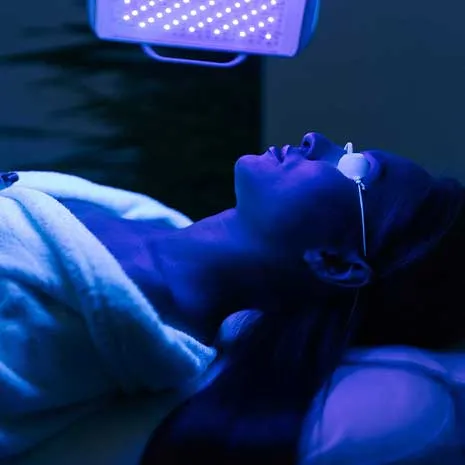Is Phototherapy Effective in the Treatment of Vitiligo? A Comprehensive Scientific Overview

Is Phototherapy Effective in the Treatment of Vitiligo? A Comprehensive Scientific Overview
- 22 July 2025
- 223

Vitiligo is a chronic dermatological condition characterized by the destruction of melanocytes, the pigment-producing cells in the skin. This leads to the formation of depigmented white patches, which can expand and become cosmetically distressing. As vitiligo is multifactorial in nature—caused by a combination of autoimmune dysfunction, genetic predisposition, oxidative stress, and environmental triggers—its treatment is often challenging and varies from patient to patient.
Among various therapeutic options, phototherapy has emerged as one of the most effective and evidence-based treatments for vitiligo. Utilizing controlled exposure to specific wavelengths of ultraviolet (UV) light, phototherapy aims to stimulate melanocyte activity, promote repigmentation, and stabilize disease progression.
This article explores the types of phototherapy, their mechanisms of action, clinical effectiveness, safety, and guidelines for use, based on the latest dermatological research.
What is Phototherapy?
Phototherapy is a non-invasive treatment that uses ultraviolet radiation to modulate skin immune responses and stimulate melanocyte function. In vitiligo, two main forms of phototherapy are widely used:
- Narrowband Ultraviolet B (NB-UVB): Uses 311–313 nm wavelength light
- Excimer Laser or Excimer Light: Delivers focused 308 nm UVB light to specific lesions
These modalities work by:
- Suppressing local immune responses (reducing cytotoxic T-cell activity)
- Stimulating melanocyte regeneration and migration from hair follicles and surrounding skin
- Inducing melanogenesis (melanin production)
- Reducing local inflammation and halting lesion progression
NB-UVB Phototherapy: The Gold Standard
NB-UVB phototherapy is currently considered the first-line light-based therapy for non-segmental vitiligo. It is suitable for both localized and widespread forms of the disease.
Clinical Efficacy:
- Studies show repigmentation in 60–75% of patients
- Most effective on face, neck, and trunk
- Less responsive on fingers, lips, and bony areas
- Initial results typically visible after 8–12 weeks
- Treatment durations can range from 6 months to 1 year or more
Treatment Protocol:
- Administered 2–3 times per week
- Typically involves 24 to 48 sessions
- Doses are adjusted based on skin type and lesion location
Safety Profile:
- Low risk of skin cancer compared to PUVA
- Mild, temporary side effects (dryness, redness, itching)
- Safe for children and elderly patients
Excimer Laser Therapy: Targeted Precision
Excimer laser therapy uses a concentrated beam of 308 nm UVB light to treat specific lesions. It is especially useful for patients with localized vitiligo or lesions in cosmetically sensitive areas.
Advantages:
- High precision for small, resistant patches
- Rapid repigmentation in facial and neck regions
- Can be combined with NB-UVB for optimal outcomes
- Suitable for patients with limited disease
Limitations:
- More expensive than NB-UVB
- Not suitable for large body surface areas
- Availability may be limited to specialized centers
Combination Therapy with Phototherapy
Phototherapy is often combined with topical or systemic agents to improve treatment response and durability.
Common combinations include:
- Topical calcineurin inhibitors (e.g., tacrolimus) + NB-UVB
- Topical corticosteroids + NB-UVB in early inflammatory stages
- Oral antioxidants (vitamin C, E, polyphenols) to combat oxidative stress
- Psychological support to improve adherence and quality of life
These combinations have shown superior efficacy in facial vitiligo and stable non-segmental types.
Who is a Candidate for Phototherapy?
Phototherapy is indicated in:
- Patients with non-segmental, stable vitiligo
- Lesions on face, neck, chest, and back
- Children and adults with no contraindications
- Patients who have not responded to topical therapy
Contraindications:
- Photosensitive disorders (e.g., lupus erythematosus)
- Use of phototoxic medications
- History of cutaneous malignancies
- Pregnancy and breastfeeding (case-dependent)
Psychological and Cosmetic Benefits
Beyond pigmentation, phototherapy plays a major role in psychosocial improvement:
- Enhanced self-esteem and body image
- Decreased levels of depression and anxiety
- Increased treatment adherence and social confidence
- Patients often report greater overall life satisfaction
Especially in facial or visible lesions, successful repigmentation leads to measurable improvements in quality of life metrics.
Frequently Asked Questions
Initial improvements are usually seen within 8–12 weeks. Significant repigmentation may take 6 months or more.
Home phototherapy units can be safe if prescribed and supervised by a dermatologist. Improper use can lead to burns or ineffective treatment.
No. Unlike prolonged corticosteroid use, phototherapy does not cause skin atrophy when properly administered.
Repigmentation may last for years but can regress if the disease becomes active again. Maintenance sessions may help preserve results.
Yes, NB-UVB is considered safe for children under medical supervision.
